Your clothing is your first line of defense against hypothermia, hyperthermia, sunburn, frostbite, scrapes and wounds etc.
Like any piece of survival gear, choose your pants wisely.
By Leon Pantenburg
Disclaimer: UF Pro Gear supplied the product for this review. At the time of publication, there was no sponsorship relationship between UF Pro Gear and Survivalcommonsense.com. Nobody had any input into this review. As always, all I ever promise is a fair shake.
It’s easy to spot the first responders, even when they’re on vacation and dressed in tourist clothes. They’re always looking for better equipment so they can do their jobs more safely and efficiently.
That was the case recently when I came off a trail along the Deschutes River in Central Oregon. I was wearing my UF PRO P-40 All-Terrain pants and carrying a Beretta Tactical Backpack. A fit-looking gentleman stopped me and asked first about the pack, and then the pants. Turns out, he is a police officer from San Diego, and pants are very important in his line of work.
On any given night he might be crawling on his knees, traversing barricades, pulling an injured person out of a car wreck, chasing a perpetrator or be involved in some sort of physical altercation. His uniform takes a beating, and his clothing is his first line of defense for protection against cuts, scrapes, bruises and abrasions incurred while on the job.
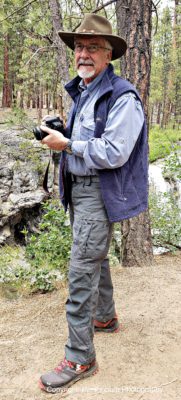
The P-40s are comfortable and provide a lot of protection.
My clothing needs are nowhere as extreme as those of a police officer, but there are similarities. I depend on my clothing for protection from heat and cold. In the winter I want wool or fleece. In the summer, a lightweight, quick drying material with ripstop features might be the best choice for heat and and sun protection. Generally, you have to settle for one or the other.
Choosing your outdoors pants is not easy. But for the past few weeks, I have been trying out the UF Pro P-40 All-Terrain pants and they may cover both bases pretty well.
Here are the pants’ specs, according to the UF Pro website:
FEATURES
- Two way access side pocket with huge storage capacity, inner compartments and an attached gear pocket with a security flap
- Hand pockets
- Safety pocket
- Small gear pocket
- Back pockets
- Double belt loops
- Stretch in the waistband
- Velcro loops on the waist band for attaching a combat belt
- Externally accessible knee pockets for UF PRO® Knee Pads
- Width-adjustable lower trouser leg
- CORDURA® enhanced knee and instep area
- Double zipper pull fly
- Inner zipper for a detachable WINDSTOPPER® lining
MATERIALS
- 67% Polyester, 33% Cotton Ripstop blend
- Schoeller®-dynamic, 80% Polyamide, 10% Polyester, 10% Elastane
- 100% CORDURA® fabric
The good stuff
Fit: I’m the average-sized American male. I’m 5’10” tall, wear 32-33 waist pants and weigh about 188 pounds. (At least, before the pandemic quarantine!) The pants fit me very well. They sit just below the waist, which is my preference.
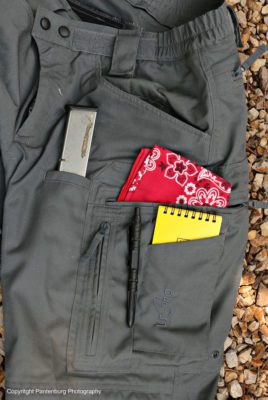
The pockets are handy and well-placed.
Anatomic cut: This refers to the pants’ design that makes them move well with you. This is really important for tactical-types or for recreationists who may be clamoring over rocks or in and out of a canoe or kayak. I found the pants to be extremely comfortable when hiking or doing activities that require a lot of flexibility and physical activity. A rock climber would like these pants.
I don’t do rock climbing, since I learned many years ago how to read a topo map. (Think about it – if you can make sense of a topographical map, you can figure out easier routes around obstacles and don’t have to clamber over them. Dad joke. My rock climber daughter groans.)
Comfort: We don’t talk much about comfort when it comes to tactical or work clothes, but that is a premier feature on any article of clothing. If you’re going to be wearing an article of clothing for long hours, you don’t want it to bind, chafe or be restrictive. In my time wearing these pants they were always extremely comfortable.
Pockets: Pants can’t have too many pockets, IMO, and the P-40s have plenty and they are really well-located. I love cargo pockets on the thighs, and carry everything in them. I generally carry my map and compass in the right thigh pocket for easy access. The left cargo pocket is where my bandana, a paper towel and some individual hand wipes go. The P-40 cargo pockets have top and side zippers for easy access, so it’s easy to load extra stuff. The pockets don’t bellow out, and that keeps them from being too bulky when you’re walking through brush.
There are two pockets for pistol magazines, and the standard front and back pockets. The San Diego police officer was particularly interested in the depth of these pockets. He commented that those pockets are the ones that get all sorts of items stuffed in them over the course of a shift.
Knee pads: These are optional, unless you’re a first responder who might at some point have to crawl through obstacles and over debris (think gravel or possibly broken glass). In that case, the knee pad option might be the first consideration. Technical knee pads need to be strapped on. This means there will be straps above and below the knee, and of necessity the knee pads must be snug. This design may be tight and uncomfortable. This may not the best choice on a long shift.
The P-40s have an externally-accessible knee pad pocket that positions the pads for effective use. This means the knee pads can be inserted or removed quickly for comfort without having to take the pants off. I bet there are some police officers or servicemembers out there who would really appreciate this feature! These knee pad pockets and the facings are cordura for long wear and protection. A special set of knee pads are designed for these pockets, and they are available as an after-market addition.
Cloth: The polyester/cotton blend breathes well and is cool in the summer heat. Because the pants fit so well, there was no place or area that got hot. I’ve only had the chance to wear the pants in hot weather, so I don’t know yet how they will do in cold, wet weather. But looking at the quality of the material, I’m guessing they will do just fine.
Cordura lower leg and instep: You don’t appreciate this feature until you walk through sagebrush along an overgrown trail, or through brush. The cordura sheds brush easily, and the pants’ lower leg protects against thorns and stickery things ripping into your legs. Cordura also sheds water, so walking through thick wet brush won’t be nearly as uncomfortable. Those of us who hunt or hike through sagebrush will really appreciate this feature.

The liner zips into the pants to stop the wind.
Windstopper liner: This is a pretty impressive optional feature and a big selling point. The liner zips easily into the pants and converts the summer pants into cold weather gear. The company claims that warmth depends on your activity level and on the amount of heat your body produces. During medium intensity activities, the website claims, a WINDSTOPPER®-lined pair of Striker or P-40 pants should be warm down to about 14 degrees. I haven’t had a chance to test this out yet, since my big concern has been staying cool in the summer heat.
On the Oregon elk hunts I’m used to, the morning starts out frosty and cold. But by noon, the temperatures have risen about 50 degrees. These pants will keep you warm in the early morning and then the liner can be removed when it gets hot. Look here for more info on the liners.
So do you need a pair of P-40s? Well, they aren’t cheap and they appear, to me anyway, to be over-engineered for my lifestyle. While I won’t wear shoddy, inadequate or cheap clothing in the field, I don’t really need a pair of pants of this incredible quality.
That said, I don’t put my life on the line every time I go to work as a journalist or river guide. The chances of me having to deal with a car wreck, domestic disturbance, rioters or physical confrontations are virtually non-existent. But first responders deal with these situation on a daily basis. For these heroes, quality gear and clothing are survival equipment. The gear may make the difference between being injured on the job or clocking out at the end of the shift to go home.
For a fly-in backcountry hunter or fisherman where every ounce counts, your clothing options may be restricted. These pants are rock solid, and can handle any abuse they need to.
A pair of P-40s will set you back about $175, and the sensible thing is to consider if you would ever really need all the over-kill. I personally don’t need this quality of pants. But it sure is nice to know that if I ever did, the P-40s wouldn’t let me down. I will be wearing mine a lot.
For more information on the UF PRO P-40 All-Terrain pants check out the website.
Please click here to check out and subscribe to the SurvivalCommonSense.com YouTube channel – thanks!

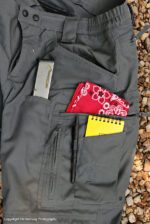
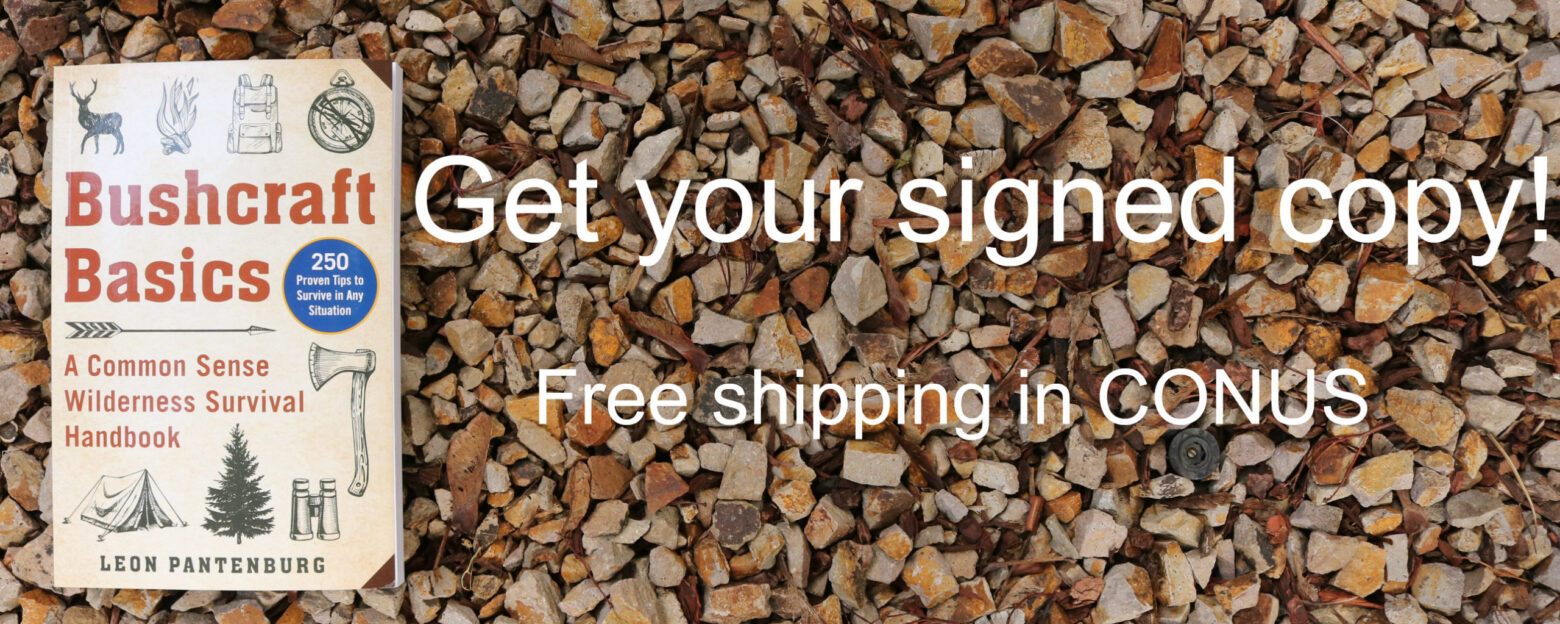
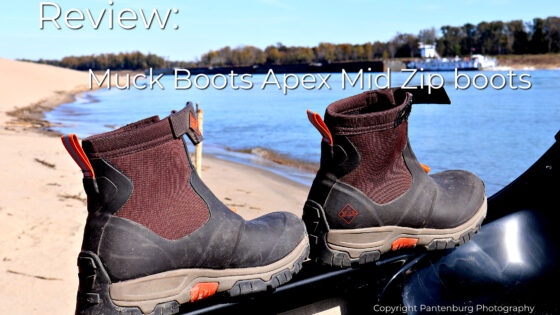

Leave a Reply